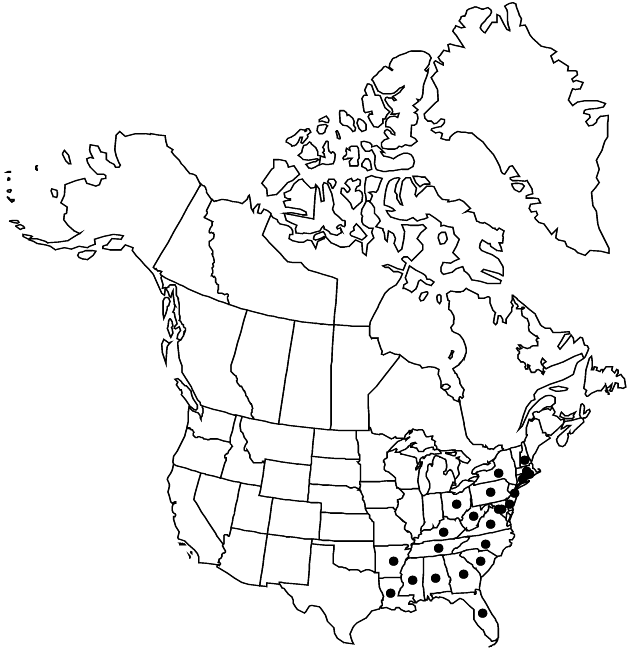Difference between revisions of "Eupatorium rotundifolium var. ovatum"
in A. P. de Candolle and A. L. P. P. de Candolle, Prodr. 5: 178. 1836.
Basionym: Eupatorium ovatum Bigelow
Synonyms: Eupatorium pubescens Muehlenberg ex Willdenow
FNA>Volume Importer |
FNA>Volume Importer |
||
| Line 29: | Line 29: | ||
|elevation=10–200+ m | |elevation=10–200+ m | ||
|distribution=Ala.;Ark.;Conn.;Del.;D.C.;Fla.;Ga.;Ky.;La.;Md.;Mass.;Miss.;N.H.;N.J.;N.Y.;N.C.;Ohio;Pa.;R.I.;S.C.;Tenn.;Va.;W.Va. | |distribution=Ala.;Ark.;Conn.;Del.;D.C.;Fla.;Ga.;Ky.;La.;Md.;Mass.;Miss.;N.H.;N.J.;N.Y.;N.C.;Ohio;Pa.;R.I.;S.C.;Tenn.;Va.;W.Va. | ||
| − | |discussion=<p>Variety ovatum is an apomictic polyploid that may be a derivative of Eupatorium rotundifolium and E. sessilifolium. Morphologically, it is closer to E. rotundifolium than to E. sessilifolium; the name E. pubescens has priority at species rank.</p> | + | |discussion=<p>Variety ovatum is an apomictic polyploid that may be a derivative of <i>Eupatorium rotundifolium</i> and <i>E. sessilifolium</i>. Morphologically, it is closer to <i>E. rotundifolium</i> than to <i>E. sessilifolium</i>; the name E. pubescens has priority at species rank.</p> |
|tables= | |tables= | ||
|references= | |references= | ||
| Line 53: | Line 53: | ||
|publication year=1836 | |publication year=1836 | ||
|special status= | |special status= | ||
| − | |source xml=https://jpend@bitbucket.org/aafc-mbb/fna-data-curation.git/src/ | + | |source xml=https://jpend@bitbucket.org/aafc-mbb/fna-data-curation.git/src/8f726806613d60c220dc4493de13607dd3150896/coarse_grained_fna_xml/V19-20-21/V21_1184.xml |
|tribe=Asteraceae tribe Eupatorieae | |tribe=Asteraceae tribe Eupatorieae | ||
|genus=Eupatorium | |genus=Eupatorium | ||
Revision as of 15:30, 18 September 2019
Leaf blades 3-nerved distal to bases, 30–70 × 30–60 mm, broadest near middles, bases broadly cuneate to cuneate, margins serrate. 2n = 20, 30.
Phenology: Flowering Jul–Aug.
Habitat: Moist, low ground, roadsides, sandy soils
Elevation: 10–200+ m
Distribution

Ala., Ark., Conn., Del., D.C., Fla., Ga., Ky., La., Md., Mass., Miss., N.H., N.J., N.Y., N.C., Ohio, Pa., R.I., S.C., Tenn., Va., W.Va.
Discussion
Variety ovatum is an apomictic polyploid that may be a derivative of Eupatorium rotundifolium and E. sessilifolium. Morphologically, it is closer to E. rotundifolium than to E. sessilifolium; the name E. pubescens has priority at species rank.
Selected References
None.
Lower Taxa
None.